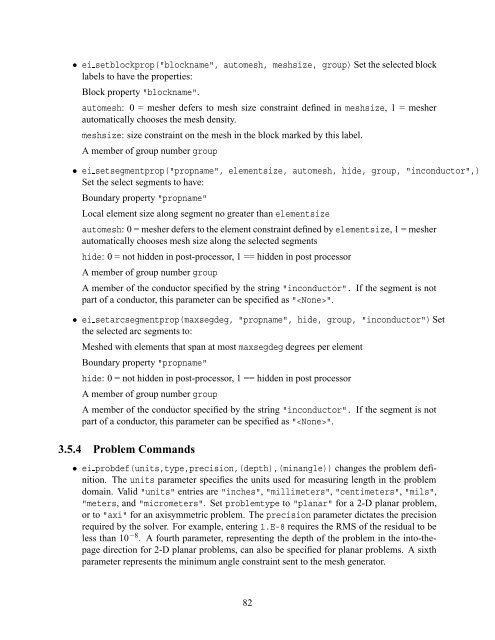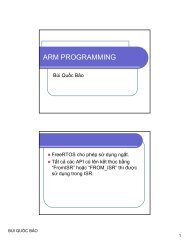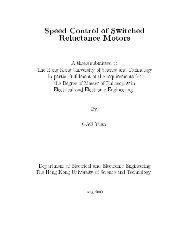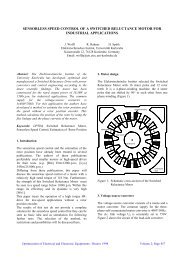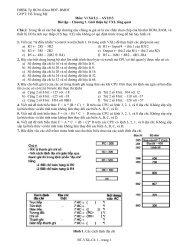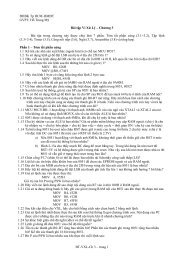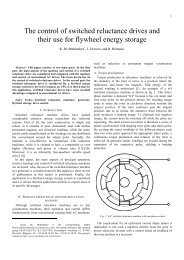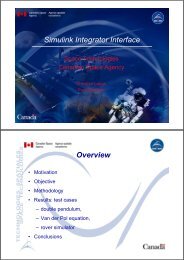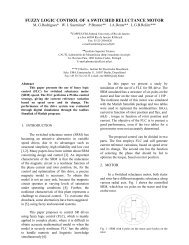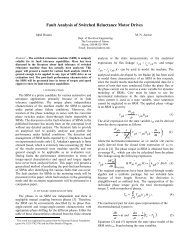Finite Element Method Magnetics
Finite Element Method Magnetics
Finite Element Method Magnetics
- No tags were found...
Create successful ePaper yourself
Turn your PDF publications into a flip-book with our unique Google optimized e-Paper software.
• ei setblockprop("blockname", automesh, meshsize, group) Set the selected blocklabels to have the properties:Block property "blockname".automesh: 0 = mesher defers to mesh size constraint defined in meshsize, 1 = mesherautomatically chooses the mesh density.meshsize: size constraint on the mesh in the block marked by this label.A member of group number group• ei setsegmentprop("propname", elementsize, automesh, hide, group, "inconductor",)Set the select segments to have:Boundary property "propname"Local element size along segment no greater than elementsizeautomesh: 0 = mesher defers to the element constraint defined by elementsize, 1 = mesherautomatically chooses mesh size along the selected segmentshide: 0 = not hidden in post-processor, 1 == hidden in post processorA member of group number groupA member of the conductor specified by the string "inconductor". If the segment is notpart of a conductor, this parameter can be specified as "".• ei setarcsegmentprop(maxsegdeg, "propname", hide, group, "inconductor") Setthe selected arc segments to:Meshed with elements that span at most maxsegdeg degrees per elementBoundary property "propname"hide: 0 = not hidden in post-processor, 1 == hidden in post processorA member of group number groupA member of the conductor specified by the string "inconductor". If the segment is notpart of a conductor, this parameter can be specified as "".3.5.4 Problem Commands• ei probdef(units,type,precision,(depth),(minangle)) changes the problem definition.The units parameter specifies the units used for measuring length in the problemdomain. Valid "units" entries are "inches", "millimeters", "centimeters", "mils","meters, and "micrometers". Set problemtype to "planar" for a 2-D planar problem,or to "axi" for an axisymmetric problem. The precision parameter dictates the precisionrequired by the solver. For example, entering 1.E-8 requires the RMS of the residual to beless than 10 −8 . A fourth parameter, representing the depth of the problem in the into-thepagedirection for 2-D planar problems, can also be specified for planar problems. A sixthparameter represents the minimum angle constraint sent to the mesh generator.82


